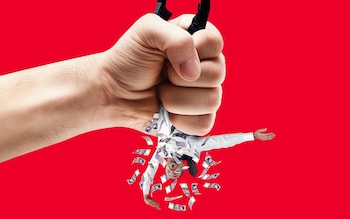The rate of inflation dropped to 2% in May - ending a three-year battle to return price rises to target levels.
It hasn't been this low since July 2021 and is significantly lower than the peak of 11.1% in October 2022 amid an energy crisis caused by the Ukraine war.
A fall in inflation doesn't mean prices are coming down - though some individual items might - but rather that they're rising less quickly.
Read more:
Inflation fall is welcome - but financial situation households are in compared to five years ago is stark
But how much has your individual spending changed?
Use our calculator to see how much prices are rising on the groceries, clothing and leisure activities you pay for.
Which prices are increasing fastest?
Olive oil costs 40% more than it did last year, with prices for 500ml-1 litre rising from £6.16 to £8.60 in just 12 months.
Experts have put that price rise down primarily to poor olive yields due to last year's heatwaves in southern Europe.
Plums, meanwhile, are up by a fifth, from £2.95 per kilo to £3.68.
Food and drink products are responsible for six of the 10 highest increases since last year, with the others being toiletries like hair gel and liquid soap.
Top five price rises:
• Olive oil (500ml-1 litre): up 40%, £6.16 to £8.60
• Plums (per kg): up 25%, £2.95 to £3.68
• White potatoes (per kg) up 22%, 72p to 88p
• Hair gel (150-200ml) up 22%, £3.35 to £4.08
• Hot chocolate drink (250-400g): up 20%, £2.93 to £3.51
Fifty-three of the 156 types of food and drink tracked by the ONS have actually become cheaper since last year. Many of these were dairy items like cheese and double cream, as well as dried pasta.
Overall, 140 out of the 444 products in our database are cheaper than they were this time last year.
Top food price decreases:
• Dry spaghetti or pasta (500g): down 13%, £1.04 to 91p
• Pulses (390-420g): down 12%, 78p to 69p
• Cheddar cheese (per kg): down 9%, £9.65 to £8.78
• Baked beans (400-425g): down 8%, £1.07 to 98p
• Fresh double cream (250-300ml): down 7%, £1.35 to £1.26
Of non-supermarket items, electric heaters have been some of the biggest price fallers - by more than 23%.
What is the effect of long-term inflation?
The price changes described above compare the cost of items to where they were a year ago.
However, inflation has now been at high levels for an extended period of time.
The war in Ukraine, COVID, Brexit, and other supply chain pressures have all contributed to spiralling costs in recent years.
Inflation reached a 40-year high of 11.1% in October 2022.
Keep up with all the latest news from the UK and around the world by following Sky News
Tap hereWhile the headline inflation figure is finally starting to come down, any amount of inflation means that prices are still rising, and building on already inflated costs.
We've compared the costs of shopping items to what they were three years ago to see what the cumulative impact of inflation has been.
The biggest price rise for groceries over that time has been for olive oil (500ml-1 litre) which has more than doubled, from £3.55 to £8.60 in the past three years.
Sugar is up by 72% on average, with a kilogram bag costing £1.19 now compared with 69p in April 2021.
Use our calculator to see how much prices in your shopping basket have risen in total since three years ago.
Who is worst affected?
Richard Lim, chief executive of Retail Economics, says: "It's the least affluent households that are going to see much higher rates of inflation as they spend more of their income on food and energy."
We'll continue to update our spending calculator over the coming months so you can see how you'll be affected.
Follow the Daily podcast on Apple Podcasts, Google Podcasts, Spotify, Speaker
Methodology
The ONS collects these prices by visiting thousands of shops across the country and noting down the prices of specific items. There are upwards of 100,000 prices published every month, from more than 600 products.
The items that form the "official shopping basket" change each year to reflect how the purchasing habits of the population have changed. For example in March 2021, after a year of the pandemic, hand gel, loungewear bottoms and dumbbells were added, while canteen-bought sandwiches were among the items removed.
Where there aren't the exact equivalent items available at a survey shop, ONS officials pick the best alternative and note that they've done this so it's weighted correctly when the averages are worked out.
Shops are weighted as well, so the price in a major chain supermarket will have a greater impact on the average than an independent corner shop.
We will be updating these figures each month while the cost of living crisis continues.
During the pandemic, more of the survey was carried out over the phone and work is ongoing to digitise the system to be able to take in more price points by getting data from supermarket receipts, rather than making personal visits.
Data journalists: Daniel Dunford, Amy Borrett, Ben van der Merwe, Joely Santa Cruz and Saywah Mahmood
Interactive: Ganesh Rao
Design: Phoebe Rowe, Brian Gillingham
The Data and Forensics team is a multi-skilled unit dedicated to providing transparent journalism from Sky News. We gather, analyse and visualise data to tell data-driven stories. We combine traditional reporting skills with advanced analysis of satellite images, social media and other open-source information. Through multimedia storytelling, we aim to better explain the world while also showing how our journalism is done.
Disclaimer: The copyright of this article belongs to the original author. Reposting this article is solely for the purpose of information dissemination and does not constitute any investment advice. If there is any infringement, please contact us immediately. We will make corrections or deletions as necessary. Thank you.



